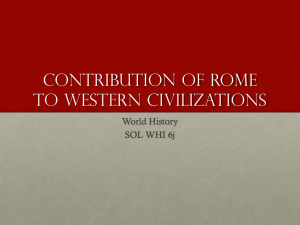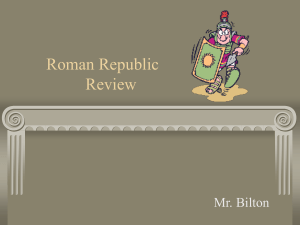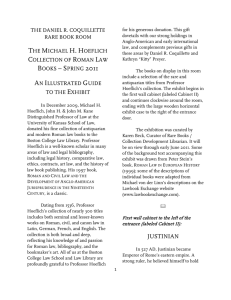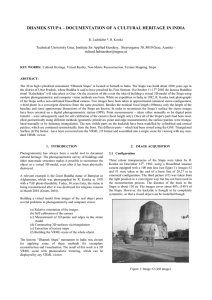1. Among the remarkable features of the Pantheon in Rome is the
advertisement
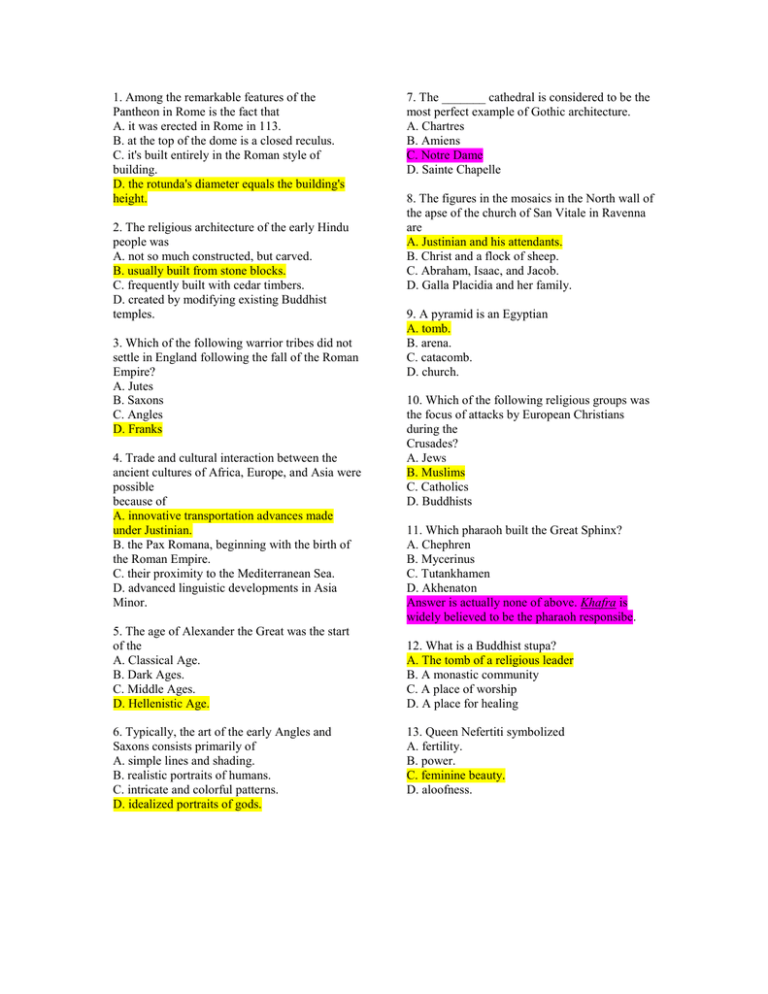
1. Among the remarkable features of the Pantheon in Rome is the fact that A. it was erected in Rome in 113. B. at the top of the dome is a closed reculus. C. it's built entirely in the Roman style of building. D. the rotunda's diameter equals the building's height. 2. The religious architecture of the early Hindu people was A. not so much constructed, but carved. B. usually built from stone blocks. C. frequently built with cedar timbers. D. created by modifying existing Buddhist temples. 3. Which of the following warrior tribes did not settle in England following the fall of the Roman Empire? A. Jutes B. Saxons C. Angles D. Franks 4. Trade and cultural interaction between the ancient cultures of Africa, Europe, and Asia were possible because of A. innovative transportation advances made under Justinian. B. the Pax Romana, beginning with the birth of the Roman Empire. C. their proximity to the Mediterranean Sea. D. advanced linguistic developments in Asia Minor. 5. The age of Alexander the Great was the start of the A. Classical Age. B. Dark Ages. C. Middle Ages. D. Hellenistic Age. 6. Typically, the art of the early Angles and Saxons consists primarily of A. simple lines and shading. B. realistic portraits of humans. C. intricate and colorful patterns. D. idealized portraits of gods. 7. The _______ cathedral is considered to be the most perfect example of Gothic architecture. A. Chartres B. Amiens C. Notre Dame D. Sainte Chapelle 8. The figures in the mosaics in the North wall of the apse of the church of San Vitale in Ravenna are A. Justinian and his attendants. B. Christ and a flock of sheep. C. Abraham, Isaac, and Jacob. D. Galla Placidia and her family. 9. A pyramid is an Egyptian A. tomb. B. arena. C. catacomb. D. church. 10. Which of the following religious groups was the focus of attacks by European Christians during the Crusades? A. Jews B. Muslims C. Catholics D. Buddhists 11. Which pharaoh built the Great Sphinx? A. Chephren B. Mycerinus C. Tutankhamen D. Akhenaton Answer is actually none of above. Khafra is widely believed to be the pharaoh responsibe. 12. What is a Buddhist stupa? A. The tomb of a religious leader B. A monastic community C. A place of worship D. A place for healing 13. Queen Nefertiti symbolized A. fertility. B. power. C. feminine beauty. D. aloofness. 14. A unique architectural feature of the Hagia Sophia is its A. mihrab. B. transept. C. minaret. D. trumeau. 15. A fertility goddess is called _______ in Indian art. A. Isis B. Yakshi C. Astarte D. Ishtar 16. If you were a citizen in ancient Rome and you decided to worship in the Pantheon, you would do so because you were interested in worshipping A. Apollodorus, Nike of Samothrace, and Discobolos. B. Athena and Poseidon. C. the most powerful Roman gods and goddesses. D. all of the Roman deities. 17. Roman paintings in stone that have best stood the test of time are A. sosus. B. frescoes. C. oculus. D. mosaics. 18. The _______ is the central pillar of the main doorway of a Romanesque church. A. Doric column B. trumeau C. stupa D. mosaic 19. Which of the following components of the architecture of the Romans was used extensively in the eleventh century in Medieval Europe in the construction of castles, fortresses, churches, and monasteries? A. Flying buttress B. Architrave C. Pointed arch D. Round arch 20. A state of enlightenment and never-ending bliss in Buddhism is called A. Tipitaka. B. Mahayana. C. Nirvana. D. Theravada.



